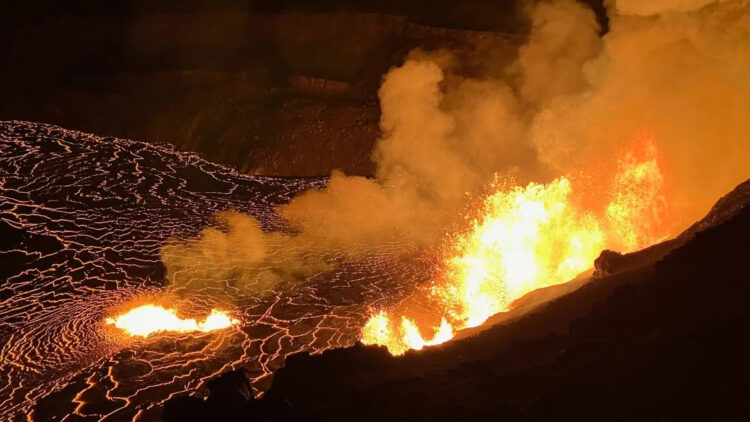Hawaii is on the verge of an energy revolution, with the potential to harness geothermal energy as an unprecedented power source. The recent eruption of the Kilauea volcano underlines this opportunity, as the state’s geological features may hold the key to a sustainable future. As Hawaii moves toward its goal of 100% clean energy by 2045, the integration of geothermal resources looks increasingly promising.
The eruption of Kilauea: A natural geothermal laboratory
On Monday, December 23, Kilauea—one of the world’s most active volcanoes—erupted after a three-month hiatus, sending stunning fountains of lava soaring to impressive heights of up to 300 feet.
This eruption, which began at 2:20 a.m., attracted throngs of tourists to Hawaii Volcanoes National Park, where they could safely view the event from designated areas. As of 5 p.m. that same day, approximately 500 acres of lava had covered the caldera floor.
Ken Hon, the head scientist at the United States Geological Survey’s Hawaiian Volcano Observatory, commented on the volcanic event: “This is a really big, voluminous eruption … This is the fifth eruption that we’ve had in the summit area of Kilauea since December of 2020.”
The latest eruption highlights Hawaii’s unique geothermal energy potential, which has remained largely untapped despite its historical significance in energy discussions.
Volcanoes: Turning geothermal energy potential into reality
The concept of geothermal energy exploration in Hawaii was first introduced in 1881, when King David Kalakaua envisioned harnessing volcanic energy. However, it wasn’t until the 1970s that actual drilling began on the Big Island, culminating in the establishment of the Puna Geothermal Venture (PGV) in 1993.
Despite its prospects, PGV currently provides only about 3% of the state’s energy, a stark contrast to geothermal-rich countries such as Iceland, where geothermal energy accounts for a substantial portion of electricity needs.
Mark Glick, Hawaii’s Chief Energy Officer, emphasized the urgent need for a “reset” regarding geothermal energy in the state. Recent funding initiatives—including a $5 million grant sourced from coronavirus relief—aim to investigate geothermal resources in regions such as Maui.
These efforts demonstrate a renewed commitment to tapping into the extensive underground heat resources available in Hawaii.
The road ahead: Challenges and opportunities
Hawaii’s shift to geothermal energy has encountered challenges, including regulatory hurdles, community opposition, and the complexities of drilling into active volcano sites. The last major geothermal project faced considerable backlash from local residents and environmental groups.
Nevertheless, recent efforts—such as the Kapolei Energy Storage facility near Honolulu—highlight Hawaii’s broader strategy to meet its renewable energy goals. This facility includes a 185-megawatt battery system that enables efficient storage of renewable energy, mitigating the intermittent nature of solar and wind resources. As the state grapples with its energy needs, geothermal energy remains a vital piece in the overall plan.
Hawaii’s commitment to a clean future extends beyond local efforts—it also serves as a model for energy transition globally. With 32% of its energy currently sourced from renewables, the state is paving the way for innovative solutions to reduce our reliance on traditional fossil fuels. The ongoing geothermal exploration in Maui and advancements in energy storage technology position Hawaii as a frontrunner in this energy resolution.
As Hawaii navigates the intricacies of its energy transition, the promise of geothermal energy to contribute significantly to that state’s energy portfolio is clear. With the eruption of Kilauea, it could well be the catalyst for a game-changing shift in energy production. With both determination and strategic planning, Hawaii is ready to turn the dream of utilizing its geothermal resources into a reality, providing inspiration for clean energy initiatives around the world.

